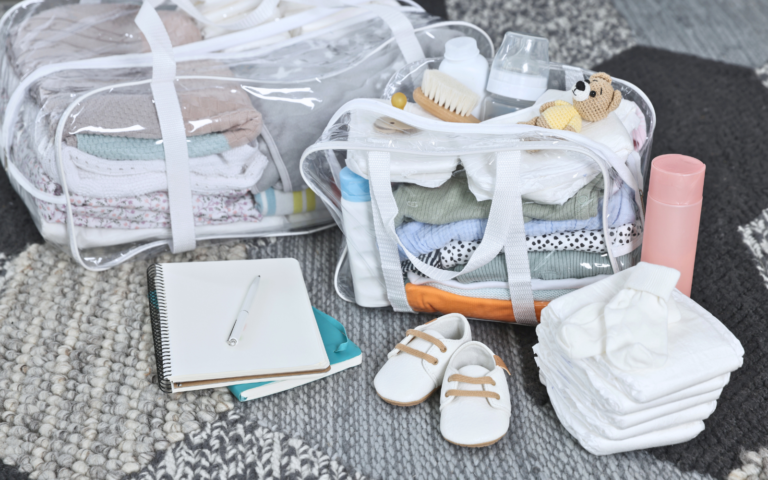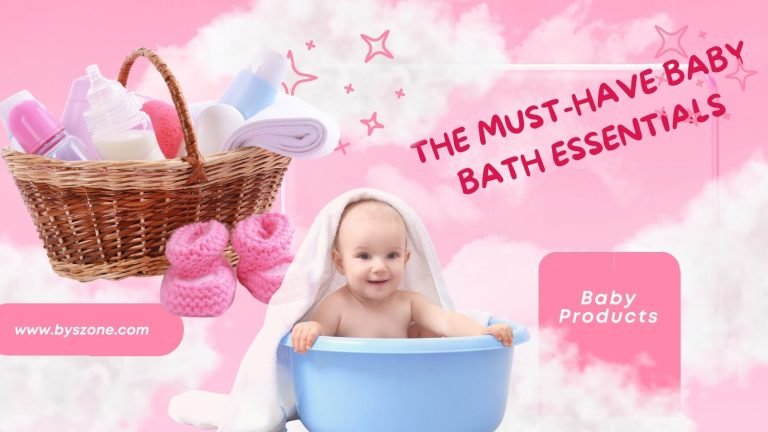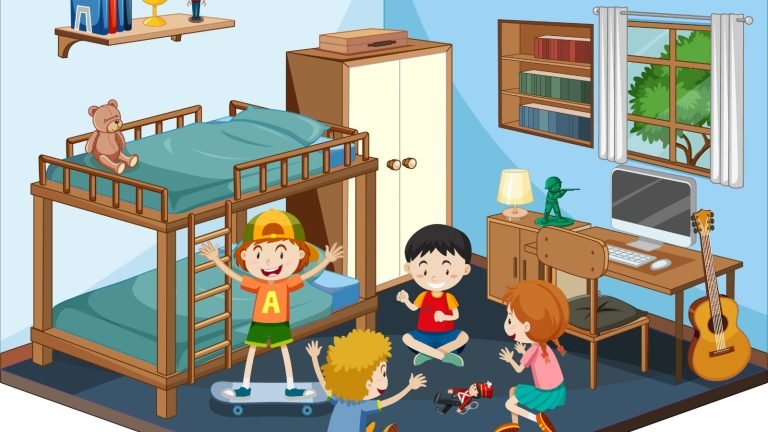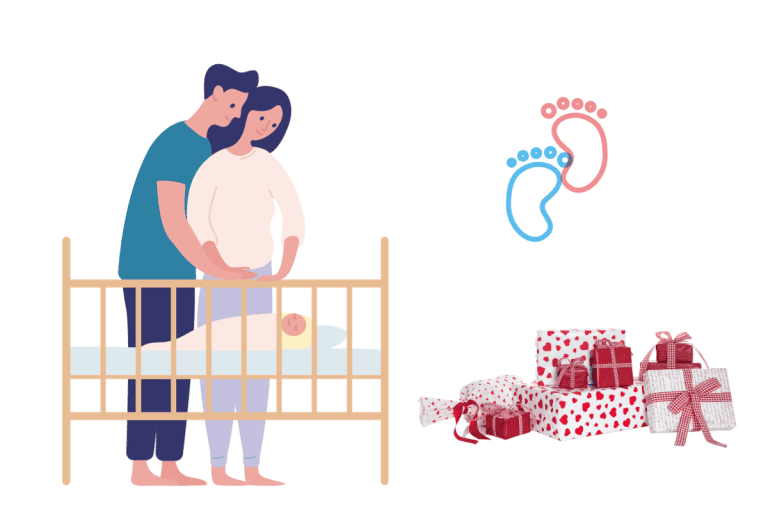Managing Baby Allergies and Sensitivities 2024: A Parent’s Essential Guide
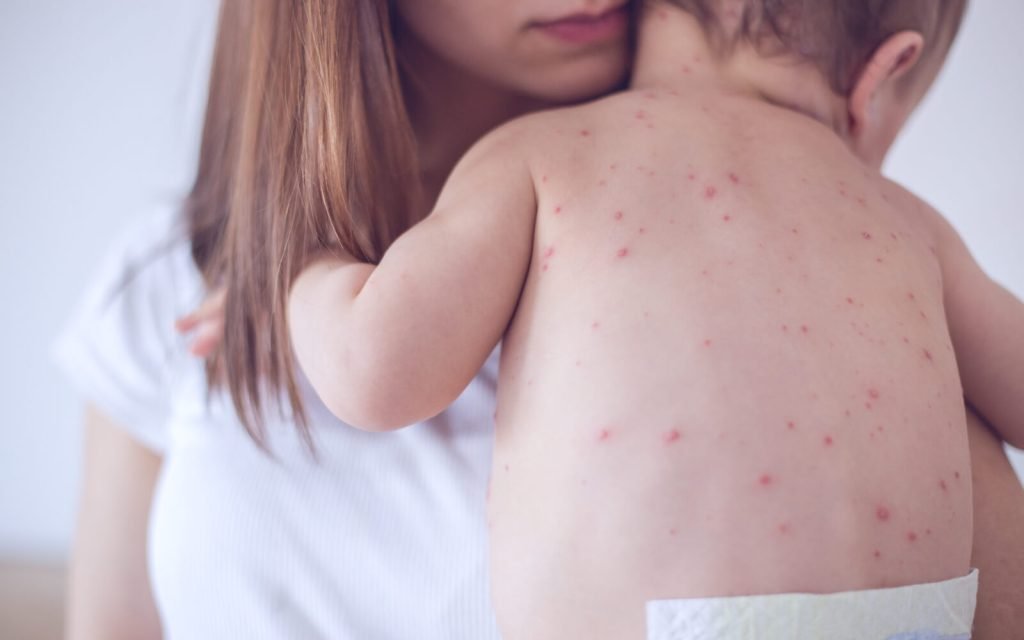
Navigating allergies in babies and young children can be challenging, especially when your little one is too young to explain what they’re feeling. Whether your child has food allergies, sensitivities to environmental factors like dust mites or pollen, or reactions to skin products, understanding the signs of allergic reactions is essential.
In this guide, we’ll explore how to recognize and manage different allergies, what symptoms to watch for, and tips on reducing allergy triggers to keep your baby happy and comfortable.
Key Takeaways – Managing Baby Allergies and Sensitivities
- Recognize allergy symptoms in babies, including skin issues like rashes, digestive upset, and trouble breathing.
- Learn how to safely introduce new foods and monitor for allergic reactions.
- Tips on allergy-proofing your home and managing environmental allergies.
- Understand when to consult an allergist or pediatrician for testing or medical advice.
1. Understanding Allergies in Babies and Young Children

Babies are more vulnerable to allergies due to their developing immune systems. Some common types of allergies in infants and young children include:
- Food Allergies: Certain foods, especially peanuts, dairy, and eggs, are among the most common allergens.
- Environmental Allergies: Dust mites, pollen, and pet dander can trigger reactions.
- Skin Allergies: Soaps, detergents, and baby lotions sometimes cause rashes and other skin reactions.
Differentiating Allergies from Sensitivities
- Allergy: Involves the immune system and can cause severe reactions, such as hives or trouble breathing.
- Sensitivity: Doesn’t involve the immune system but can cause symptoms like nausea or an upset stomach.
While both allergies and sensitivities are common in babies, allergies typically pose a higher risk and may require strict avoidance of certain foods or substances.
2. Spotting Symptoms of Allergic Reactions in Babies
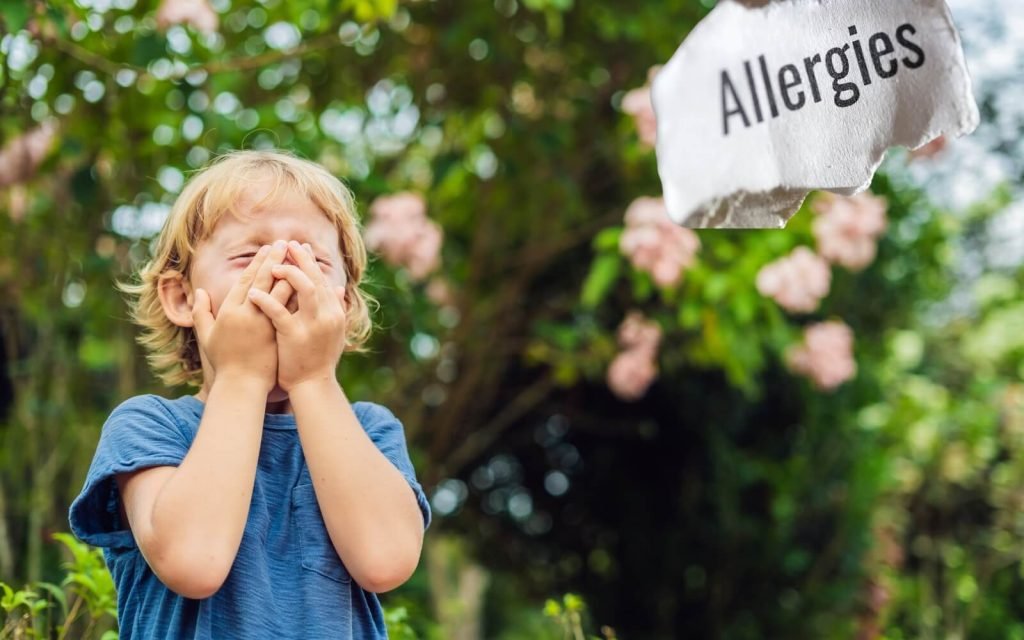
Allergy symptoms can vary widely and may not always be obvious. Key symptoms include:
- Skin Reactions: Hives, eczema, or rashes on the skin.
- Respiratory Issues: Runny nose, sneezing, or even asthma-like symptoms.
- Digestive Problems: Vomiting, diarrhea, or signs of nausea.
- Severe Reactions: Trouble breathing, swelling, or anaphylaxis, which is a life-threatening allergic reaction that requires immediate medical care.
Skin Reactions and Irritants
Some of the most visible symptoms are skin-related, like red, itchy rashes that may occur after using certain soaps or detergents. Hypoallergenic or fragrance-free products are ideal for babies with sensitive skin. If a rash appears suddenly or worsens, switching to a gentle detergent or hydrocortisone cream (approved by a doctor) may help.
3. Food Allergies: How to Introduce New Foods and Spot Reactions

Introducing new foods is an exciting step for any parent, but if your baby has a family history of food allergies, it’s wise to proceed cautiously.
Tips for Safe Food Introduction
- One at a Time: Introduce new foods one at a time, waiting three to five days between each to watch for possible allergic reactions.
- Common Allergens: Dairy, eggs, peanuts, soy, and fish are among the most common allergens in babies. Be extra careful with these foods.
- Track Reactions: Keep a food diary to monitor symptoms like hives, vomiting, or diarrhea, which are common symptoms of a food allergy.
If an allergic reaction occurs, such as hives or trouble breathing, consult a pediatrician immediately. Severe reactions, especially swelling around the lips or trouble breathing, could be anaphylaxis. Having an epinephrine injector (commonly called an EpiPen) on hand may be essential for babies with high-risk allergies.
Breastfeeding and Allergies
Breastfeeding can help reduce the risk of developing allergies, though it’s not a guarantee. Some allergens, such as dairy, can pass through breast milk, so if you notice symptoms in your baby, consider adjusting your diet to see if symptoms improve.
4. Environmental Allergies: Making Home Allergy-Safe

Allergens like pollen, dust mites, and pet dander are among the most common environmental triggers, especially for seasonal allergies. Reducing these allergens at home may help keep your baby comfortable.
Allergy-Proofing the Home
- Dust Mites: Use dust mite-proof covers on mattresses and pillows and wash bedding frequently in hot water.
- Pollen and Mold: Keep windows closed during high pollen seasons and use an air purifier to reduce indoor allergens.
- Pet Dander: If you have pets, limit their access to your baby’s room and vacuum frequently.
5. Working with Healthcare Providers to Manage Allergies

A pediatrician or allergist can provide valuable guidance if your baby has recurring symptoms of allergy. Tests and treatments available include:
- Allergy Testing: Blood tests or skin tests help identify specific allergens.
- Antihistamines: Mild allergic reactions may be treated with baby-safe antihistamines under your doctor’s direction.
- Emergency Plans: If your baby is at risk of severe reactions, discuss an emergency plan with your doctor, including when to use an EpiPen or seek medical care.
Consulting an Allergist
An allergist specializes in diagnosing and treating allergies and can advise you on how to manage symptoms and avoid triggers. They may also recommend allergy-proofing tips for your home and provide insight into safe foods and products for your baby.
6. Tips for Daily Management of Baby Allergies

Daily management practices make a big difference in keeping allergies at bay and ensuring comfort.
a. Safe Feeding and Shopping Practices
- Food Labels: Check food labels for allergen warnings, especially for packaged or processed foods.
- Avoid Cross-Contamination: When preparing food, avoid cross-contact with allergens by using separate utensils and cutting boards.
b. Clean and Allergy-Friendly Baby Products
Opt for products specifically labeled as hypoallergenic. Avoid using heavily fragranced soaps, lotions, or detergents, as they may contain allergens or irritants that could trigger a reaction.
c. Emergency Preparedness
- Know the Signs: Be able to recognize symptoms of anaphylaxis, such as swelling, difficulty breathing, and a rapid heartbeat. Immediate treatment is essential, as anaphylaxis is a life-threatening condition.
- Have Medication On Hand: In addition to daily management, keep necessary medications like antihistamines and an epinephrine injector nearby if your doctor recommends them.
Summary
Managing allergies in babies requires patience, attention, and a proactive approach to identifying triggers. From food allergies to environmental sensitivities, staying vigilant about potential allergens and working closely with healthcare providers can make a significant difference. Safe food introduction, allergy-proofing your home, and knowing how to recognize symptoms of an allergic reaction all contribute to your baby’s well-being and comfort. Over time, you’ll get more confident in managing and even reducing allergy risks, helping your baby enjoy a healthier, happier start.
Frequently Asked Questions
What Are Common Allergy Symptoms in Babies?
Symptoms include rashes, hives, respiratory issues like sneezing or a runny nose, and digestive issues such as vomiting or diarrhea. Severe reactions may include trouble breathing and swelling, which require immediate medical attention.
How Can I Safely Introduce New Foods to My Baby?
Introduce new foods one at a time, and wait three to five days before adding another. This approach helps identify any allergic reaction and makes it easier to spot specific triggers.
When Should I See a Pediatrician About Allergies?
If your baby has recurring symptoms or signs of a severe allergic reaction (like trouble breathing or swelling), consult a pediatrician. For complex cases, an allergist may offer more specialized guidance.
Can Babies Outgrow Their Allergies?
Some food allergies, like those to milk or eggs, are often outgrown by age three. However, allergies to foods like peanuts may persist, so monitoring and consulting with your doctor is essential.
What Should I Do if My Baby Has an Allergic Reaction?
For mild reactions, note the symptoms and consult a pediatrician if needed. For severe symptoms, such as difficulty breathing or swelling, seek immediate medical help, as this could indicate anaphylaxis, a life-threatening allergic reaction.
Can Babies Outgrow Their Allergies?
Yes, many babies outgrow certain allergies by age three, especially milk and egg allergies. However, some allergies, like peanut allergies, may be lifelong.
Also Read:
The Ultimate Guide to Best Baby Probiotics 2024: Top Picks and Benefits
Introducing Probiotics to Your Baby in 2024: A Effective Parent’s Guide
Probiotics Side Effects in Babies: Positive Effects and What Every Parent Should Know
Essential Benefits of Liquid Probiotics for Babies: Everything You Need to Know
How to Choose the Right Humidifier for Your Baby?

